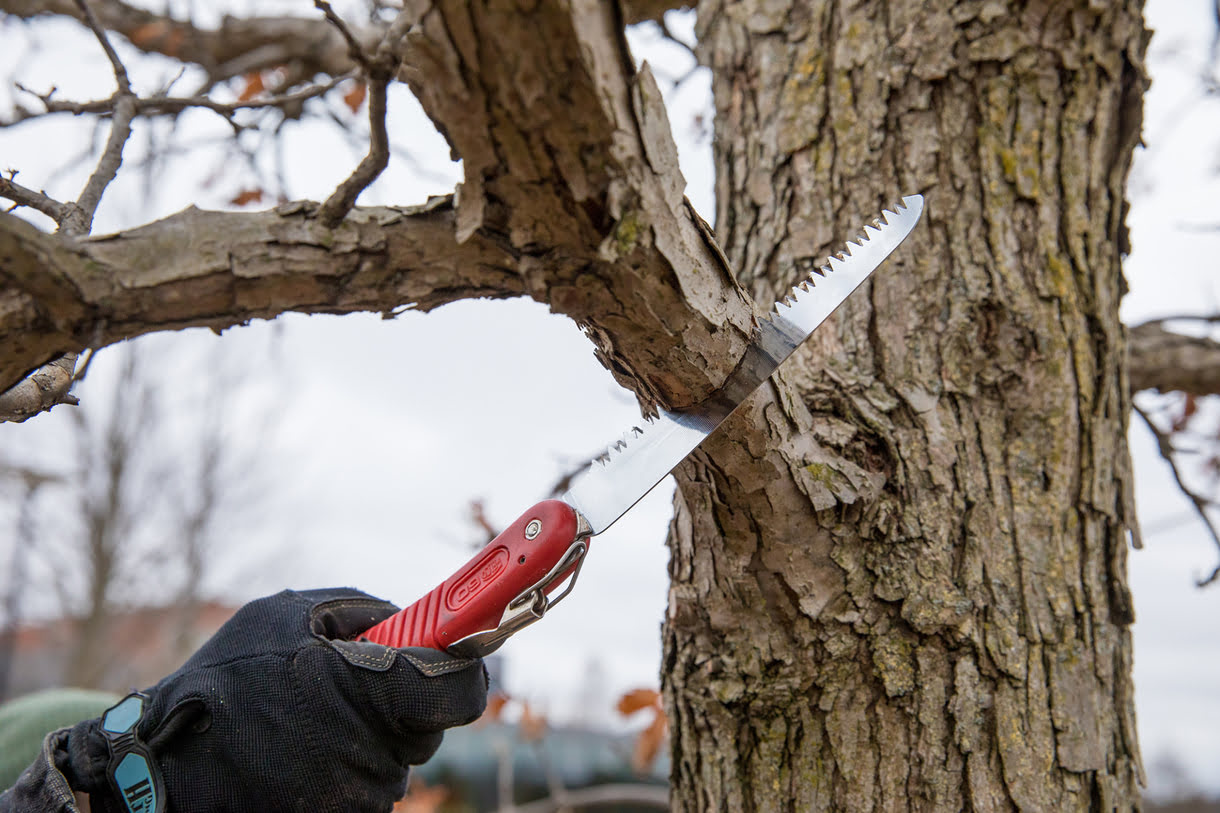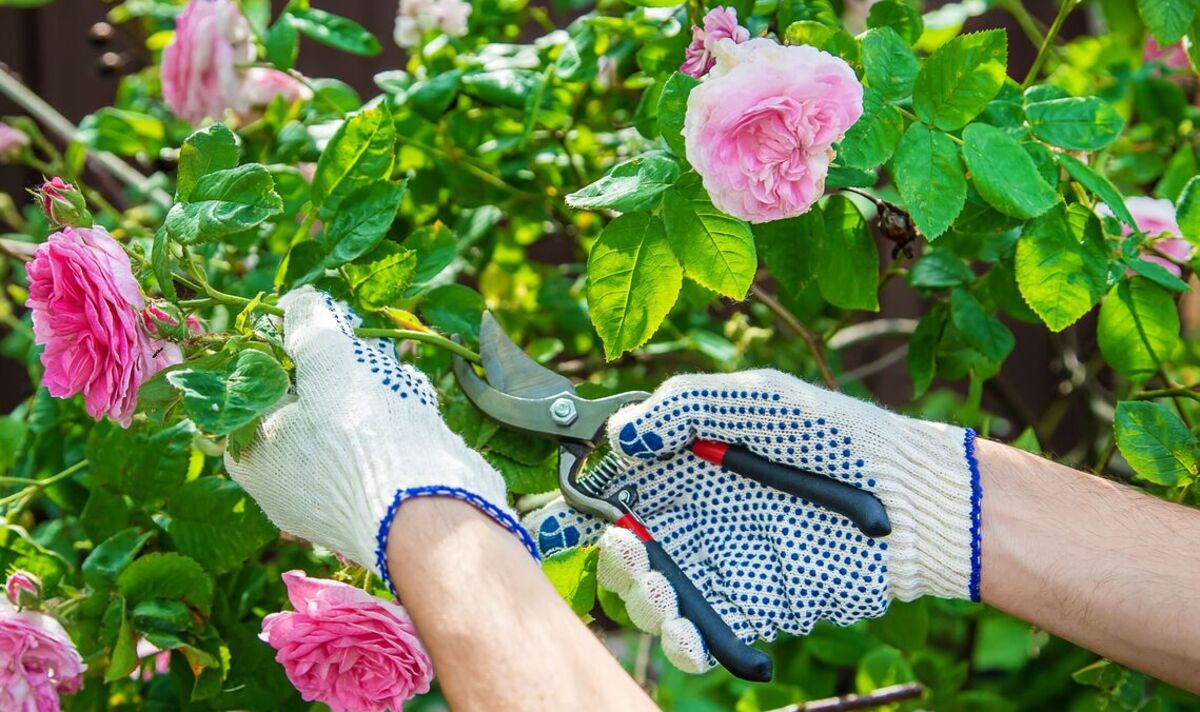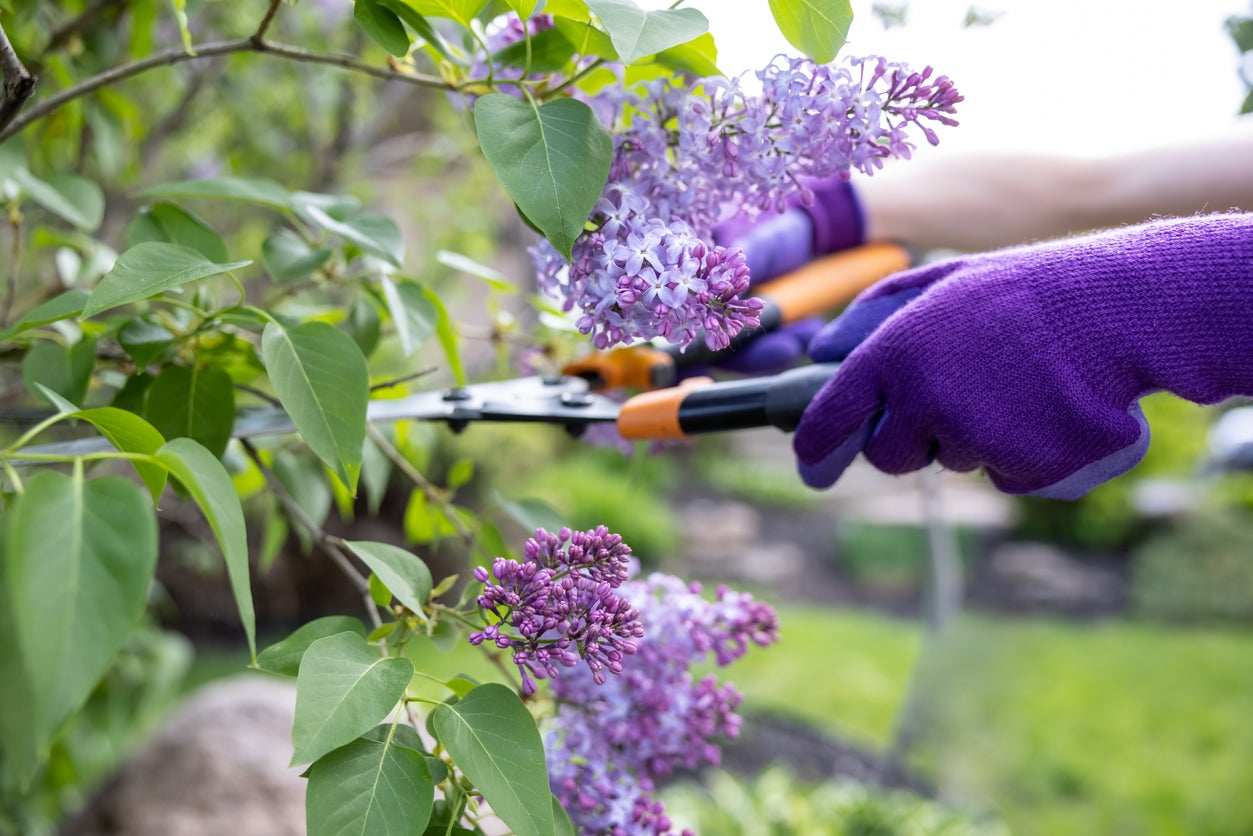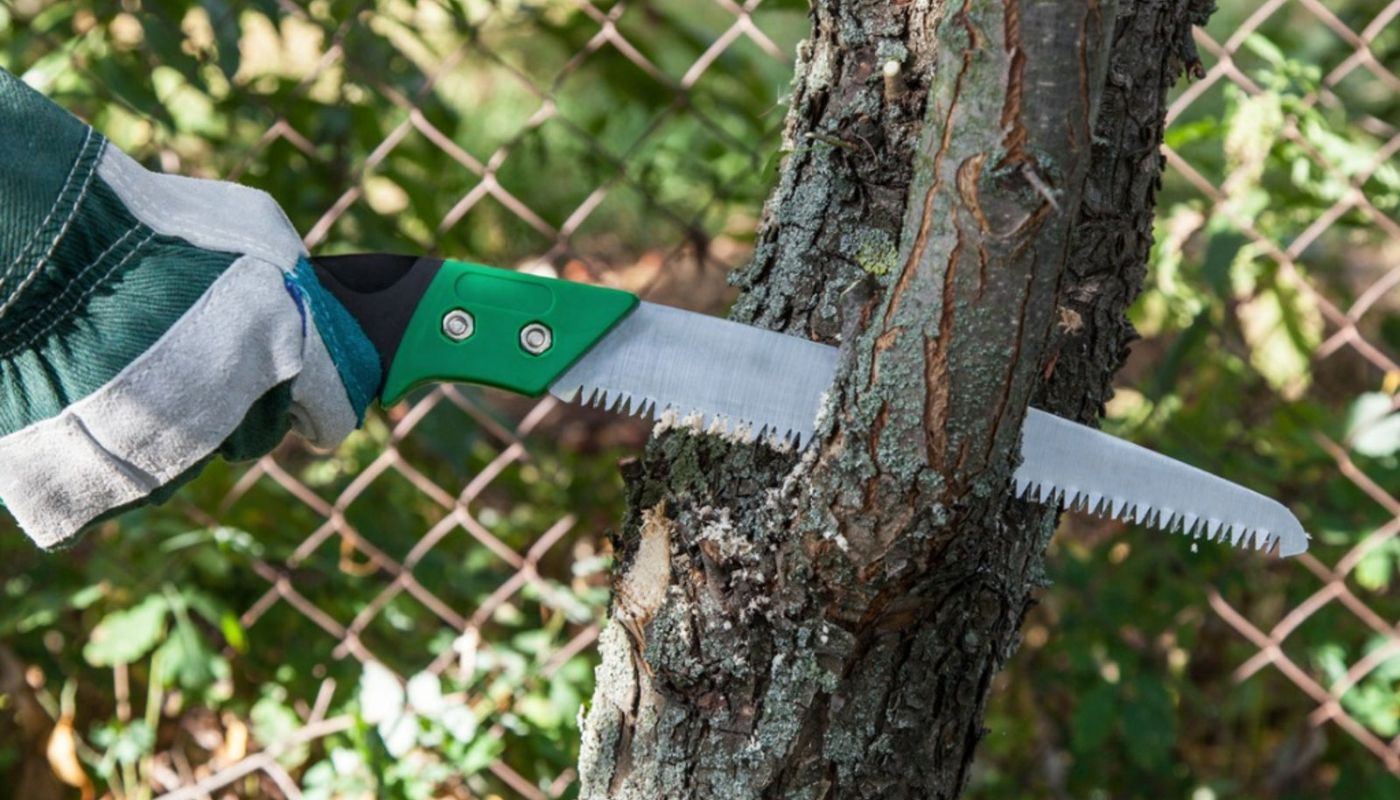Home>Gardening Techniques>Plant Care>When Do You Prune Holly Shrubs
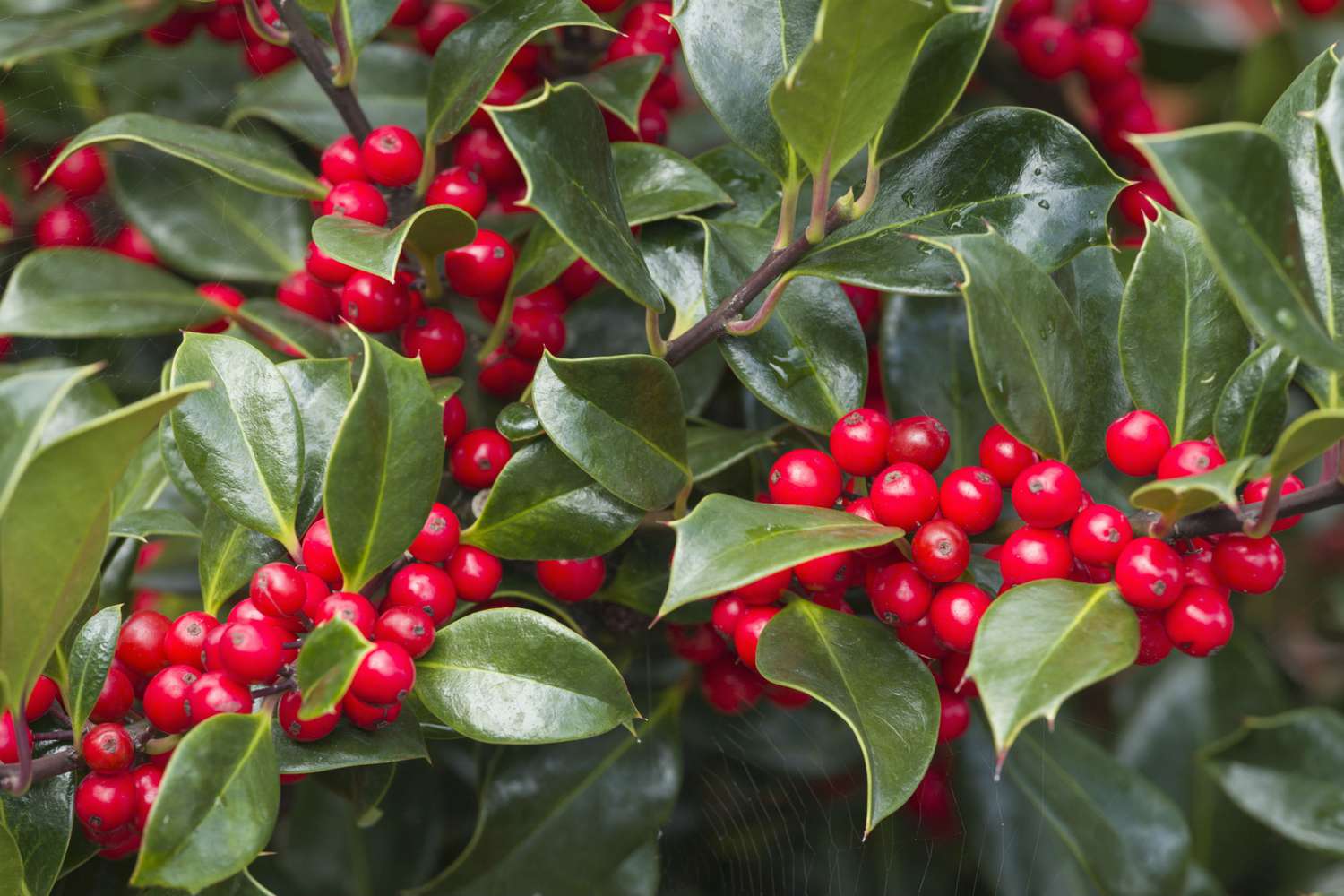

Plant Care
When Do You Prune Holly Shrubs
Modified: January 22, 2024
Learn the best time to prune your holly shrubs for optimal plant care. Discover expert tips to keep your holly shrubs healthy and flourishing.
(Many of the links in this article redirect to a specific reviewed product. Your purchase of these products through affiliate links helps to generate commission for Chicagolandgardening.com, at no extra cost. Learn more)
Table of Contents
- Introduction
- Understanding Holly Shrubs
- Why Prune Holly Shrubs?
- Factors to Consider before Pruning
- Best Time to Prune Holly Shrubs
- How to Prune Holly Shrubs
- Tools and Equipment Needed for Pruning
- Pruning Techniques for Different Types of Holly Shrubs
- Common Pruning Mistakes to Avoid
- Promoting Healthy Growth and Maintenance Tips
- Conclusion
Introduction
Welcome to our comprehensive guide on pruning holly shrubs. Pruning is an essential aspect of plant care that helps maintain the health, shape, and appearance of your holly shrubs. Whether you are a seasoned gardener or just starting with plant care, understanding when and how to prune your holly shrubs is crucial for their overall well-being.
Holly shrubs are known for their glossy green foliage, vibrant berries, and beautiful structure. They are a popular choice for landscaping due to their versatility and year-round interest. However, without proper pruning, they can become overgrown, leggy, and lose their shape.
Pruning holly shrubs not only contributes to their aesthetic appeal but also encourages new growth, improves air circulation, reduces disease and pest infestations, and rejuvenates older plants. With the right knowledge and techniques, you can transform your holly shrubs into healthy, vibrant, and eye-catching features of your garden.
In this guide, we will explore the various aspects of pruning holly shrubs, including when to prune, how to prune, and the tools and techniques required for successful pruning. We will also discuss common mistakes to avoid and provide tips on promoting healthy growth and maintenance for your holly shrubs.
So, whether you have a small ornamental holly shrub or a larger variety, this guide will equip you with the necessary knowledge to prune your plants effectively. Let’s dive in and discover the best practices for pruning holly shrubs.
Understanding Holly Shrubs
Holly shrubs (Ilex spp.) are a diverse group of evergreen plants that belong to the family Aquifoliaceae. They are native to various regions around the world, including North America, Europe, and Asia. These versatile shrubs come in a range of sizes and forms, from compact varieties suitable for small gardens to larger upright or spreading types that make excellent privacy screens or hedges.
One of the most distinctive features of holly shrubs is their glossy, spiny leaves. Depending on the species, the leaves can be deep green, variegated, or even golden in color. Some holly shrubs also produce colorful berries, which not only add visual interest but can provide a food source for wildlife during the winter months.
Holly shrubs are known for their tolerance of different growing conditions. They thrive in full sun to partial shade and prefer moist, well-draining soil. However, they can adapt to a wide range of soil types, including sandy or clay soils, and are generally hardy in zones 5-9, although specific species may have different cold hardiness limits.
These shrubs have a slow to moderate growth rate, with some varieties reaching a mature height of 6-10 feet or more, while others remain compact at around 2-3 feet. Understanding the growth habits and requirements of your particular holly shrub is crucial in determining the pruning techniques and timing.
Knowing the specific species or cultivar of your holly shrub is important as well since different varieties may have different growth patterns and specific care needs. It is worth consulting with a local nursery or horticultural expert to identify the exact type of holly shrub you have and gather specific information regarding its care requirements.
Overall, holly shrubs are popular for their evergreen foliage, attractive berries, and adaptability to different environments. Understanding the characteristics and growth habits of holly shrubs is essential before diving into the process of pruning, as it will guide your approach and help you achieve the best results.
Why Prune Holly Shrubs?
Pruning holly shrubs is not just a cosmetic exercise; it serves several important purposes that contribute to the overall health and vitality of the plants. Here are some key reasons why pruning is essential for holly shrubs:
- Maintaining shape and appearance: Regular pruning helps control the size and shape of holly shrubs, ensuring they maintain an attractive and well-groomed appearance. By removing overgrown or wayward branches, you can shape your shrubs into desired forms, such as rounded, pyramidal, or columnar.
- Promoting new growth: Pruning stimulates new growth in holly shrubs. By selectively removing branches or tips, you encourage the development of fresh, healthy foliage, which enhances the overall density and aesthetic appeal of the shrubs.
- Improving air circulation: Dense growth can hinder airflow through holly shrubs, creating a humid and stagnant environment that promotes the growth of fungal diseases. Pruning allows for better air circulation, reducing the risk of disease and keeping your shrubs healthier.
- Managing size and scale: Holly shrubs can grow vigorously and may outgrow their intended space. Regular pruning controls their size, preventing them from overpowering neighboring plants or encroaching on walkways, windows, or structures. This is particularly important for smaller garden spaces or urban settings where space is limited.
- Controlling diseases and pests: Pruning helps remove diseased or infested branches from holly shrubs, preventing the spread of diseases or insect pests to healthy parts of the plant. It also allows for better visibility, making it easier to spot signs of trouble and take appropriate action promptly.
Additionally, pruning can rejuvenate older holly shrubs that have become leggy, sparse, or have lost their vigor. By selectively removing older, unproductive branches, you can stimulate the growth of new shoots and rejuvenate the overall appearance of the shrub.
It is important to note that pruning should be done with a purpose and a plan. Random or excessive pruning can stress the plant and lead to long-term damage. It is best to understand the specific growth habits of your holly shrub and follow proper pruning techniques to achieve the desired results.
Factors to Consider before Pruning
Before you grab your pruners and start trimming your holly shrubs, there are several factors that you should consider to ensure successful and effective pruning. These factors will help guide your decision-making process and ensure that you achieve the desired results:
- Growth habit and species: Different holly shrub species and varieties have distinct growth habits, including their natural shape, size, and growth rate. Understanding the specific growth characteristics of your holly shrub will help you determine the appropriate pruning techniques and timing.
- Time of year: Timing is crucial when it comes to pruning holly shrubs. Generally, it is best to prune holly shrubs during late winter or early spring before new growth emerges. However, there are exceptions, and specific species may have different optimal pruning times. Research the specific requirements of your holly shrub to ensure you prune at the most appropriate time for optimal results.
- Flowering and fruiting times: Some holly shrub species produce flowers and berries that add beauty to the landscape. If you value the flowers or berries, it is important to consider the timing of pruning to avoid removing buds or disrupting the fruiting process. Prune holly shrubs that flower in spring immediately after they bloom, while shrubs that produce berries in fall can be pruned in late winter or early spring.
- Health and condition: Assess the overall health of your holly shrubs before pruning. Remove any dead, damaged, or diseased branches to improve the overall health and appearance of the shrub. Pruning can help prevent the spread of diseases and promote the growth of new, healthy foliage.
- Desired shape and size: Determine the desired shape and size of your holly shrubs before pruning. This will guide your pruning decisions and help you achieve the desired aesthetic effect. Keep in mind that holly shrubs have a slow to moderate growth rate, so it’s important to consider their long-term growth potential when shaping them.
Considering these factors before pruning will allow you to make informed decisions and tailor your pruning approach to the specific needs of your holly shrubs. It is always a good idea to consult gardening resources or seek advice from professionals if you are unsure about any aspects of pruning your holly shrubs.
Best Time to Prune Holly Shrubs
The timing of pruning plays a crucial role in the overall health and vitality of holly shrubs. While holly shrubs can tolerate pruning at different times of the year, there are optimal periods for pruning to ensure successful results. The best time to prune your holly shrubs depends on several factors, including the species, growth habit, flowering, and fruiting times. Here are some guidelines to help you determine the ideal time for pruning:
- Late Winter/Early Spring: In general, late winter or early spring, before new growth emerges, is the most suitable time for pruning holly shrubs. This dormant period allows the shrubs to recover quickly and reduces the risk of damage or stress. Pruning holly shrubs during this time allows for the removal of any dead, damaged, or diseased branches, as well as shaping and controlling the overall size of the shrub.
- After Flowering: Some holly shrub species produce blooms in the spring. If your holly shrub is one of them, it is best to prune immediately after flowering. This way, you can enjoy the floral display while still having enough time for the shrub to produce new growth and set buds for the following year. Pruning after flowering allows you to shape the shrub and remove spent blooms, promoting a tidier appearance.
- Early Spring for Fall Berries: If your holly shrub produces berries in the fall, it is recommended to prune in early spring. Pruning holly shrubs that bear fall berries during this time allows them to retain their berries through the winter months, providing visual interest and food for wildlife. By pruning in early spring, you can remove any unwanted branches while still preserving the berries.
- Avoid Pruning in Late Summer/Fall: Pruning holly shrubs in late summer or fall is generally discouraged. Pruning during this time can stimulate new growth that may not have enough time to harden off before the colder winter temperatures arrive, making the plant more susceptible to damage. It can also remove buds or flowers that would develop into berries, diminishing the vibrant display in the following season.
Remember that specific species or varieties of holly shrubs may have different pruning requirements. It is always a good idea to research the specific needs of your holly shrub or consult with local gardening experts to determine the best time for pruning based on its unique characteristics.
By pruning holly shrubs at the right time, you can promote healthy growth, maintain the desired shape, and enhance the overall appearance of your plants.
How to Prune Holly Shrubs
Pruning holly shrubs is a process that requires careful consideration and specific techniques to ensure optimal results. Here are the steps to follow when pruning your holly shrubs:
- Assess the shrub: Begin by evaluating the overall condition and shape of the holly shrub. Identify any dead, damaged, or diseased branches that need to be removed. This step will help you determine the areas that require pruning and provide a clear vision for shaping the shrub.
- Gather the necessary tools: Equip yourself with the right tools for pruning holly shrubs. These may include clean and sharp pruning shears, loppers for thicker branches, and pruning saws for larger cuts. Ensure that your tools are in good working condition and sanitize them before use to prevent the spread of diseases.
- Start with thinning cuts: Thinning cuts involve selectively removing branches from the base or where they join another branch. Thinning helps reduce the density of the shrub, improves air circulation, and encourages new growth. Aim to remove roughly 1/3 of the older branches to stimulate fresh foliage.
- Shape the shrub: To shape the holly shrub, prune branches that extend beyond the desired size or shape of the shrub. Make clean cuts just above buds or nodes using an angle that slopes away from the bud. This will promote outward growth and prevent water from pooling on the cut surface.
- Remove suckers and water sprouts: Suckers are small shoots that emerge from the base of the shrub, while water sprouts are vigorous vertical shoots on older branches. These growths compete with the main structure of the shrub and should be pruned to maintain the integrity and aesthetics of the plant.
- Step back and assess: Regularly step back to evaluate the progress as you prune your holly shrub. This will help you ensure that you are achieving the desired shape and balance. Adjust your pruning approach as needed to create a visually appealing and well-proportioned shrub.
Remember that holly shrubs have a slow to moderate growth rate, so it’s essential to be patient and not over-prune. A gradual approach to shaping and maintenance pruning will yield better results over time.
Finally, always clean your pruning tools between cuts and after use to prevent the spread of diseases. This involves wiping the blades with rubbing alcohol or a bleach solution. Proper tool maintenance ensures clean cuts and reduces the risk of transmitting pathogens from one plant to another.
By following these steps and using proper techniques, you can effectively prune your holly shrubs to maintain their health, appearance, and longevity.
Tools and Equipment Needed for Pruning
Pruning holly shrubs requires the use of specific tools and equipment to ensure clean, precise cuts and minimize damage to the plant. Here are the essential tools you’ll need for successful holly shrub pruning:
- Pruning shears: A pair of sharp, bypass pruning shears is indispensable for making clean cuts on smaller branches and stems. Look for shears with a comfortable grip and a cutting capacity suitable for the size of your holly shrub.
- Loppers: Loppers have long handles and larger cutting blades, making them ideal for trimming thicker branches (around 1 inch in diameter) that pruning shears cannot handle. Choose loppers with ratchet or gear mechanisms to increase cutting power and reduce strain on your hands and arms.
- Pruning saw: A pruning saw with a sharp, coarse-toothed blade is necessary for cutting thicker branches (over 1 inch in diameter). Look for a pruning saw with a comfortable handle and a blade length appropriate for the size of the branches you will be pruning.
- Hand pruners or secateurs: Although similar to pruning shears, hand pruners or secateurs are designed for one-handed use. They are perfect for making quick, precise cuts on smaller branches and stems. Choose hand pruners with a locking mechanism and a blade size suited for your holly shrub.
- Pruning knife: A sharp pruning knife can come in handy for making detailed cuts or removing smaller branches and buds. It’s useful for fine-tuning the shape of the shrub or performing delicate pruning tasks.
- Pruning pole or extendable hedge shears: If you have larger holly shrubs that are challenging to reach, consider using a pruning pole with a pruning saw or an extendable hedge shear. These tools allow you to prune branches that are higher up without the need for a ladder.
- Gloves and safety glasses: Protect your hands with a durable pair of gardening gloves that provide a good grip and prevent injuries from spines or thorns. Safety glasses are also essential to shield your eyes from any debris that may fly during pruning.
- Disinfectant: It is crucial to sanitize your tools between cuts and after use to prevent the spread of diseases. Keep a disinfectant solution, such as rubbing alcohol or a bleach solution, on hand to clean your tools regularly.
Investing in high-quality tools and maintaining them properly will make your pruning tasks easier, more efficient, and safer. Remember to clean and sharpen your tools regularly to ensure that they remain in good working condition.
With the right tools at your disposal, you’ll be well-equipped to prune your holly shrubs effectively and achieve the desired results.
Pruning Techniques for Different Types of Holly Shrubs
Pruning techniques for holly shrubs may vary depending on the specific species, growth habit, and desired outcome. Here are some pruning techniques that can be applied to different types of holly shrubs:
- Regular maintenance pruning: This technique involves removing any dead, damaged, or diseased branches throughout the year. It also includes light pruning to maintain the shape, size, and overall appearance of the holly shrub. Regular maintenance pruning is essential for promoting healthy growth and preventing the shrub from becoming overgrown or leggy.
- Thinning cuts: Thinning cuts involve selectively removing branches from the base or where they join another branch. This technique helps reduce density, improve air circulation, and stimulate new growth. Thinning cuts are particularly useful for holly shrubs that have become too dense, allowing more light to reach the inner parts of the shrub and promoting healthier growth.
- Renewal pruning: Renewal pruning is recommended for holly shrubs that have become overgrown, leggy, or have lost their denseness. It involves cutting back a portion of the shrub to near ground level to stimulate new growth from the base. This technique revitalizes the shrub, encourages fresh foliage, and gives it a more compact, rejuvenated appearance.
- Hedging: Holly shrubs are often used as hedges due to their dense growth and ability to withstand pruning. To maintain a neat hedge, prune the holly shrubs regularly to encourage bushy growth and maintain the desired height and shape. Use shears or hedge trimmers for a straight, level cut along the top and sides of the hedge.
- Espalier pruning: Espalier pruning involves training holly shrubs against a wall or support structure in a flat, two-dimensional form. This technique requires careful pruning and training to shape the shrub along a horizontal pattern. Regular maintenance pruning and tying branches to a support structure help maintain the desired espalier shape.
- Selective pruning: Selective pruning is used to remove specific branches or stems to improve the overall shape, balance, and symmetry of the holly shrub. It is done with the aim of creating a more aesthetically pleasing appearance while maintaining the natural growth habit of the shrub.
It’s important to remember that the specific pruning techniques and timing may vary depending on the holly shrub species and personal preferences. Research the specific requirements of your holly shrub or consult with a local nursery or horticultural expert for guidance tailored to your specific shrub.
By employing the appropriate pruning techniques for your holly shrub, you can maintain its health, shape, and beauty, enhancing its overall presence in your garden or landscape.
Common Pruning Mistakes to Avoid
Pruning holly shrubs requires skill and careful attention to ensure the best results. However, it’s easy to make mistakes that can harm the health and appearance of your shrubs. Here are some common pruning mistakes to avoid when pruning holly shrubs:
- Over-pruning: One of the most common mistakes is over-pruning. Removing too much foliage can stress the holly shrub and impact its ability to photosynthesize and produce energy. Avoid excessive pruning, especially on old or mature shrubs, so you don’t weaken the plant or inhibit its growth.
- Pruning at the wrong time: Pruning holly shrubs at the wrong time can disrupt the natural growth cycle and impact flowering or berry production. Make sure to research the specific requirements of your holly shrub species to determine the optimal time for pruning. Pruning at improper times can result in the loss of flowers or berries and affect the overall health of the plant.
- Using dull or dirty tools: Pruning with dull or dirty tools can cause damage to branches, create jagged cuts, and increase the risk of spreading diseases. Ensure your pruning tools are clean, sharp, and well-maintained to make clean cuts and reduce the chance of infections or injuries to the holly shrub.
- Topping or shearing: Topping or shearing, where the top or sides of the shrub are cut bluntly, can lead to regrowth that is weak, dense, and unsightly. Avoid these practices and opt for selective pruning techniques that maintain the natural shape and form of the holly shrub. This will result in a more balanced and aesthetically pleasing appearance.
- Ignoring proper pruning techniques: Understanding and using proper pruning techniques are essential for promoting healthy growth and maintaining the appearance of holly shrubs. Avoid making rough or jagged cuts that can invite disease, and always prune just above a bud or branch collar to encourage proper healing and regrowth.
- Removing too many branches at once: Removing a large number of branches at once can shock the holly shrub and disrupt its natural growth pattern. Gradual pruning is key to avoid stressing the plant. Aim to remove no more than one-third of the branches during a single pruning session. This allows the shrub to recover more easily and maintain its overall health.
- Failing to sanitize tools: Disease-causing pathogens can easily spread from one plant to another through pruning tools. Failure to sanitize your pruning tools between cuts and after use can lead to the transmission of diseases. To prevent this, wipe down your tools with rubbing alcohol or a bleach solution before and after each use.
- Not considering the overall shape: Pruning holly shrubs without considering the overall shape and form can result in an unbalanced or unnatural appearance. Before making any cuts, step back and assess the shrub to determine the desired shape and size. Prune accordingly to maintain an aesthetically pleasing and well-proportioned holly shrub.
By avoiding these common pruning mistakes, you can ensure the health, vigor, and beauty of your holly shrubs. Take the time to understand proper pruning techniques and follow the specific requirements of your holly shrub species for optimal results.
Promoting Healthy Growth and Maintenance Tips
Maintaining the health and vitality of holly shrubs goes beyond pruning. Here are some additional tips to promote healthy growth and ensure the long-term well-being of your holly shrubs:
- Provide proper watering: Holly shrubs prefer consistently moist, well-draining soil. Water your shrubs deeply and regularly, especially during dry periods or when newly planted. Avoid overwatering, as it can lead to root rot and other water-related problems. Mulching around the base of the shrubs helps retain soil moisture and regulate temperature.
- Apply organic mulch: Mulching around the base of holly shrubs helps conserve moisture, suppress weeds, and improve soil conditions. Apply a 2-3 inch layer of organic mulch, such as shredded bark or compost, ensuring it does not directly touch the stems of the shrubs.
- Fertilize appropriately: Holly shrubs generally do not require heavy fertilization. However, applying a slow-release, balanced fertilizer in early spring can provide the necessary nutrients for healthy growth. Follow the instructions on the fertilizer package and avoid excessive use, as it can lead to poor growth or nutrient imbalances.
- Monitor for pests and diseases: Regularly inspect your holly shrubs for signs of pests or diseases. Common issues include leaf spot, powdery mildew, scale insects, and spider mites. Early detection allows for prompt treatment, such as using organic insecticidal soaps or horticultural oils. Proper sanitation and good airflow can also help prevent pest and disease infestations.
- Prune and shape as needed: Beyond regular maintenance pruning, monitor the growth of your holly shrubs and adjust their shape as necessary. Remove any crossing or rubbing branches that can damage the shrub or create wounds that invite disease. Shape the shrub to maintain its desired size and form, ensuring proper airflow and light penetration.
- Protect from harsh winter conditions: Holly shrubs are generally hardy, but extreme winter conditions can still cause damage. To protect them from harsh winds and freezing temperatures, consider wrapping the shrubs in burlap or providing a wind barrier. Avoid using plastic, as it can cause excess moisture and damage the shrubs.
- Regularly clean and sanitize tools: After each use, clean and sanitize your pruning tools to prevent the spread of diseases. Use rubbing alcohol or a bleach solution to disinfect the blades and handles. This practice helps maintain the overall health of the shrubs and prevents the transmission of pathogens from one plant to another.
- Regularly monitor and adjust: Keep a close eye on your holly shrubs throughout the growing season. Monitor their growth, appearance, and any changes in health. Adjust your watering, fertilizing, and pruning practices as needed to address any issues and ensure the long-term health and vitality of the shrubs.
By following these healthy growth and maintenance tips, you can provide optimal care for your holly shrubs. Regular attention, proper watering, appropriate fertilization, and timely pruning will help your shrubs thrive and continue to beautify your landscape for years to come.
Conclusion
Pruning holly shrubs is a crucial aspect of plant care that ensures their health, shape, and overall beauty. By understanding the specific requirements of your holly shrub species and employing proper pruning techniques, you can achieve the best results.
Throughout this comprehensive guide, we have explored the importance of pruning holly shrubs and provided insights into the factors to consider before pruning. We have discussed the best time to prune, the tools and equipment needed, and various pruning techniques for different types of holly shrubs. Additionally, we have highlighted the common pruning mistakes to avoid and provided tips for promoting healthy growth and maintenance.
Remember, successful pruning is a balance between maintaining the natural form of the holly shrub and achieving the desired shape and size. It is essential to be patient, observe the growth patterns of your shrubs, and adjust your pruning practices accordingly.
As you embark on pruning your holly shrubs, always keep in mind the importance of maintaining the health and vigor of the plants. Regularly assess the condition of the shrub, sanitize your pruning tools, and provide proper watering, fertilization, and pest management. By integrating these practices into your routine, you can ensure the long-term well-being of your holly shrubs.
With the knowledge and techniques provided in this guide, you are now equipped to confidently prune your holly shrubs. Enjoy the process, embrace the art of shaping and trimming, and witness your holly shrubs flourish into stunning and healthy specimens that enhance your garden or landscape.
